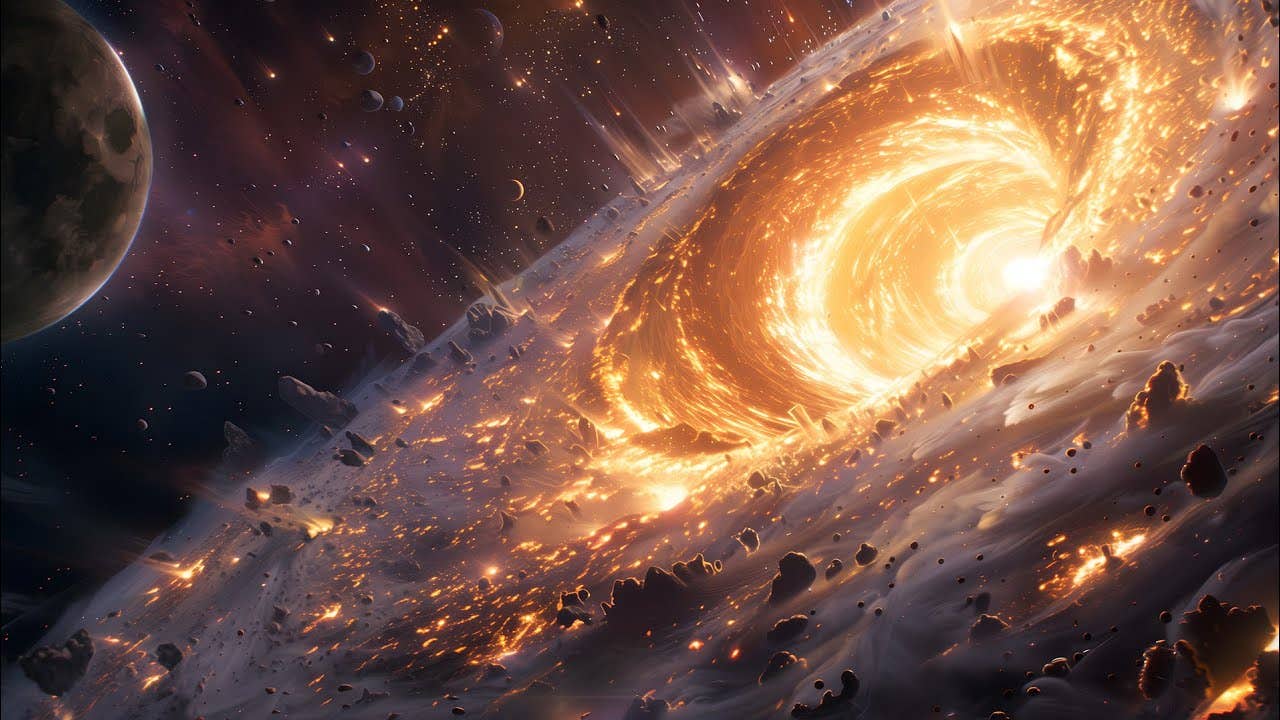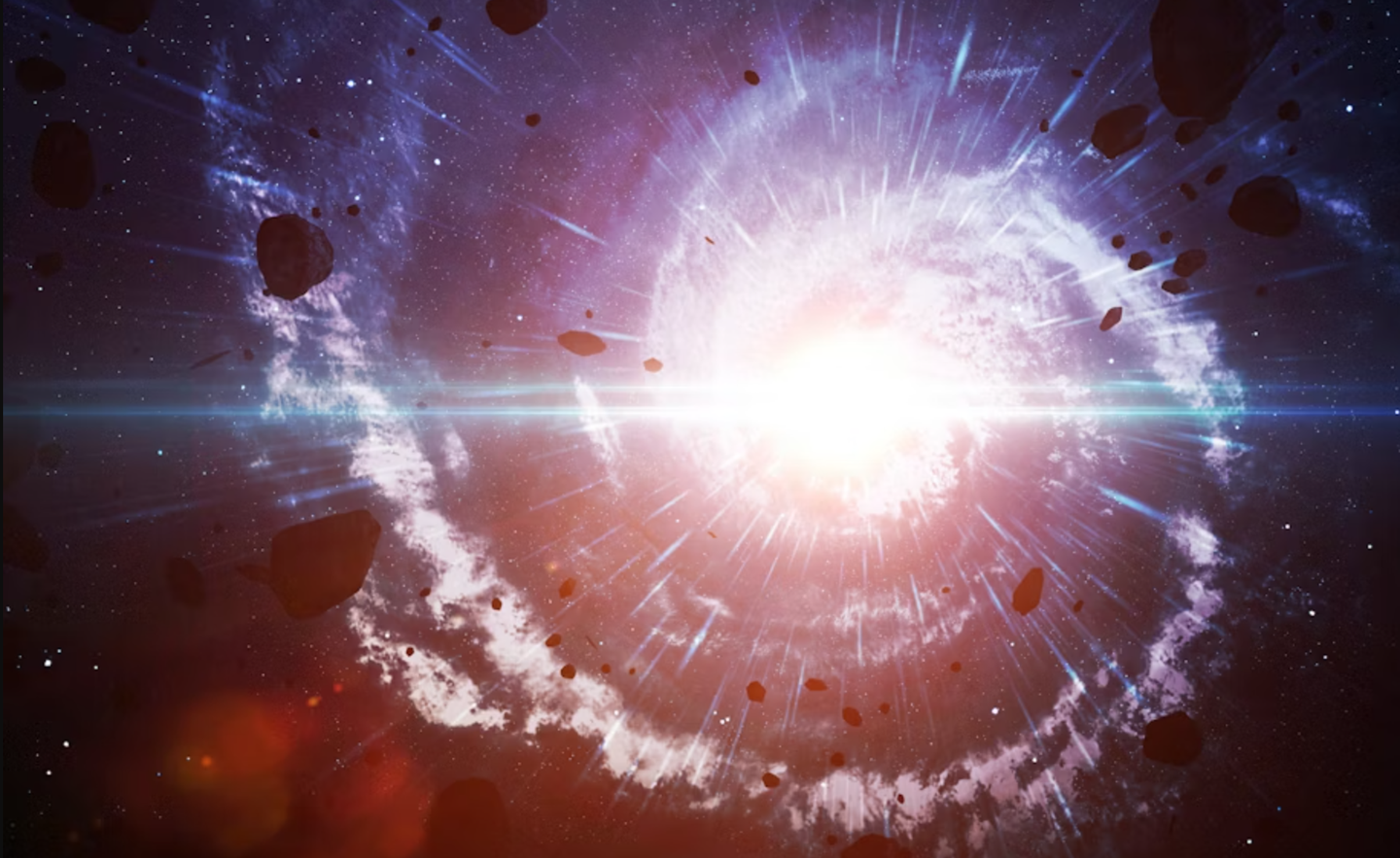First-ever fast radio burst (FRB) found in an ancient, elliptical galaxy
Astronomers trace a fast radio burst to an ancient galaxy, challenging theories linking FRBs solely to young stellar environments.

A newly discovered fast radio burst, traced to an ancient galaxy, challenges assumptions about FRB origins and opens new avenues of cosmic exploration. (CREDIT: CC BY-SA 4.0)
Investigating the enigmatic origins of fast radio bursts (FRBs) has taken a surprising turn. These millisecond-long radio flares, radiating immense energy, have traditionally been linked to galaxies with active star formation. However, a recent discovery challenges this assumption, revealing that some FRBs might emerge from far more ancient and quiescent environments.
This revelation began with the identification of FRB 20240209A, first detected in February 2024 by the Canadian Hydrogen Intensity Mapping Experiment (CHIME). Unlike typical one-off FRBs, this source repeated 22 times over several months, enabling astronomers to pinpoint its exact location.
CHIME’s outriggers, smaller telescopes strategically placed to enhance localization accuracy, proved instrumental. They traced the FRB to the outskirts of an elliptical galaxy 2 billion light-years away. This galaxy, boasting an impressive 11.3 billion-year age and 100 billion solar masses, is among the most massive FRB hosts identified to date.
A Paradigm Shift in FRB Origins
For years, scientists have associated FRBs with young stellar environments, particularly those housing magnetars—highly magnetized neutron stars formed from core-collapse supernovae. The preferential occurrence of FRBs in star-forming galaxies bolstered this theory. Yet, the discovery of FRB 20240209A in a quiescent galaxy where no new stars are forming has upended this notion.
“The prevailing theory is that FRBs come from magnetars formed through core-collapse supernovae,” explained Tarraneh Eftekhari, a NASA Einstein Fellow at Northwestern University. “But here, we don’t see evidence of young stars. This discovery suggests that not all FRBs are tied to young systems.”
Adding to the intrigue is the location of FRB 20240209A—an astonishing 130,000 light-years from the galaxy’s center. Such an isolated position challenges conventional ideas about FRBs originating in densely populated star-forming regions.
Vishwangi Shah, a graduate student at McGill University, emphasized this anomaly: “This FRB is located farther from its host galaxy’s center than any previously identified. It raises new questions about how such energetic events can occur in environments devoid of active star formation.”
The surprising association of FRBs with quiescent galaxies has prompted scientists to explore alternative progenitor theories. One possibility involves magnetars formed through delayed channels, such as binary neutron star mergers or the accretion-induced collapse of white dwarfs. These scenarios align with the prolonged timescales typical of quiescent galaxies, where stellar populations often exceed several billion years in age.
Related Stories
The repeating nature of FRB 20240209A also draws parallels with a 2022 discovery of an FRB in Messier 81 (M81), a spiral galaxy 12 million light-years away. Both FRBs share characteristics, including their origins in the outer regions of their respective galaxies and their potential links to dense stellar environments such as globular clusters.
“This CHIME FRB could be a twin of the M81 event,” noted Wen-fai Fong, an astrophysicist at Northwestern University. “These discoveries are reshaping our understanding of FRB progenitors and suggesting more exotic formation channels.”
Exploring Globular Clusters and Exotic Scenarios
Globular clusters, densely packed groups of old stars, have emerged as promising sites for FRB formation. These clusters often harbor neutron stars, white dwarfs, and other remnants of stellar evolution, creating environments conducive to the dynamic interactions required for FRB generation.
The location of FRB 20240209A strongly hints at such an origin. However, definitive confirmation awaits further observations, including proposed studies using the James Webb Space Telescope.
“If a globular cluster is present at the FRB’s location, it would mark only the second known FRB to originate from such an environment,” Shah explained. “If not, alternative exotic scenarios will need to be considered.”
Recent research has also highlighted the diversity within the FRB population. While approximately 20% of localized FRBs are repeaters, the majority remain one-off events. This dichotomy underscores the complexity of FRB progenitors and the environments in which they form. Advanced technologies, such as CHIME’s interferometric capabilities, are crucial for disentangling these mysteries.
The localization of FRB 20240209A showcases the power of CHIME’s outriggers, which provide milliarcsecond accuracy. This precision enables robust associations with host galaxies, paving the way for detailed studies of FRB environments.
Astronomers at Northwestern and McGill leveraged this capability to gather extensive spectroscopic and photometric data, revealing the host galaxy’s stellar population properties and its position within the broader FRB landscape.
“This discovery highlights the importance of precise localization,” Eftekhari emphasized. “Without CHIME’s outriggers, we wouldn’t have been able to associate this FRB with such a unique environment.”
Expanding the FRB Frontier
FRB research is entering a transformative phase. As the sample of localized events grows, scientists can explore new questions about the diversity of progenitor systems. The unexpected findings from FRB 20240209A suggest that the universe’s most energetic radio flares may arise from a broader array of environments than previously thought. This realization not only deepens our understanding of FRBs but also challenges established theories about stellar evolution and galaxy dynamics.
“Every new discovery in this field pushes the boundaries of what we know about the cosmos,” Fong said. “FRBs are teaching us to expect the unexpected and to remain open to the universe’s surprises.”
As researchers continue to refine their techniques and expand their observational reach, the true origins of FRBs may finally come into focus. Whether tied to magnetars, neutron star mergers, or entirely novel mechanisms, these enigmatic signals promise to unlock new chapters in our understanding of the universe.
Note: Materials provided above by The Brighter Side of News. Content may be edited for style and length.
Like these kind of feel good stories? Get The Brighter Side of News' newsletter.
Joseph Shavit
Head Science News Writer | Communicating Innovation & Discovery
Based in Los Angeles, Joseph Shavit is an accomplished science journalist, head science news writer and co-founder at The Brighter Side of News, where he translates cutting-edge discoveries into compelling stories for a broad audience. With a strong background spanning science, business, product management, media leadership, and entrepreneurship, Joseph brings a unique perspective to science communication. His expertise allows him to uncover the intersection of technological advancements and market potential, shedding light on how groundbreaking research evolves into transformative products and industries.



